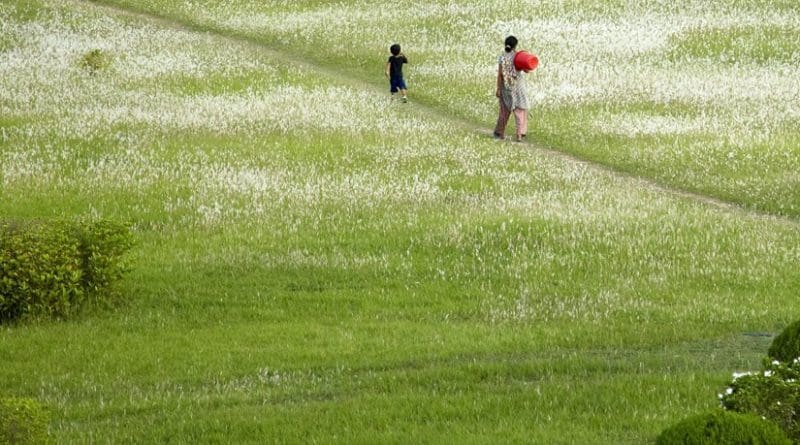Nepal: President Yadav Intervenes, Is It Wise? – Analysis
By SAAG
By Dr. S. Chandrasekharan.
On 22rd November, President Yadav gave an official call to the political parties to form a consensus government within seven days. He did not spell out what he would do otherwise.
It is not that he had not said this before but this is the first time that he has “formally” asked the parties to come to a consensus. Perhaps he is on the verge of directly intervening which I feel is unwise.
As expected, the parties failed to reach a consensus and he had to give another extension of the time line to December 6.
The leaders of the four groups- the UCPN, the Nepali Congress, the UML and the Madhesi Groups have been meeting again and again, only to agree to meet again and no consensus appears to be in the horizon either.
Thus a crisis situation has been created and no party is willing to move away from the brink.
One can understand the frustration of President Yadav. He had clearly ruled out a revival of the Constituent Assembly as it would go against the directives of the Supreme Court. Yet the biggest party and the party in power the UCPN (M) continues toying with the idea of revival. The latest proposal of Dahal that they either continue in power and conduct the next elections under their leadership or revive the CA and continue with constitution making with Nepali Congress leading was rejected out of hand by the Nepali Congress leadership.
Despite initial reluctance to pass the ordinance on the budget hoping that the delay would force the government and the opposition to come together on a consensus, the President was forced to eat his words and pass an ordinance in approving the budget. Soon he will have to take a call on filling the vacancies in the Supreme Court and more importantly in the Election Commission where only two are left out of a five-member Board. Important ambassadors’ posts remain vacant.
When the President invited the leaders of the ruling coalition and the opposition parties on 30th September, he expressed great dissatisfaction over the failure of the parties to come to a consensus and is said to have remarked that the “country cannot be held hostage.” He did give a warning that if parties cannot strike an agreement they should tell him when he should make the ‘move’. The only move he can make is to dismiss the present coalition government and appoint a prime minister from the opposition parties or from somewhere else. The names that are doing the rounds do not give any confidence.
The question is- whether the President’s action will be legal and proper? It is certain that the President would have consulted the legal experts, but will this not create more instability?
Prime Minister Bhattarai is in a defiant mood. While addressing the country on 22nd Nov, he once again made the oft repeated statement that he is “ready to quit” if the political parties are willing to come to a formal consensus on forming the government. He knows very well that the opposition parties are in no position to decide on a single candidate ( too many aspirants?)
He is therefore happy to continue with the status quo! Without consulting other parties, he once again announced that the elections will take place in mid May! But on one point we cannot but agree with him- his achievement of seeing through the integration of the PLA and near completion of the peace process.
The Nepali Congress with the help of the UML could easily call PM Bhattarai’s bluff and announce the next consensus candidate for leading the government, but are trying to make a “show” that they would surely do, once PM Bhattarai quits. They know that Bhattarai will not quit and do not want to admit that they are unable to choose a candidate from among themselves, either.
The people are also getting fed up as could be seen from the non political rally held on November 10th, where over 30,000 people from all over Kathmandu and the nearby places assembled to express their desire and the longing to negate the pessimism and bring forth an optimistic mind set. This is a pointer that cannot be disregarded. Civil unrest is just waiting to happen.
There is still time to arrive at a consensus without forcing the President to intervene. Some flexibility will have to be shown by the political parties.
There is only one issue to be settled. How to conduct a “free and fair” elections next summer in a stable environment? It does not matter as to who leads the government. There could always be tight checks and balances
Will the political parties rise to the occasion?

